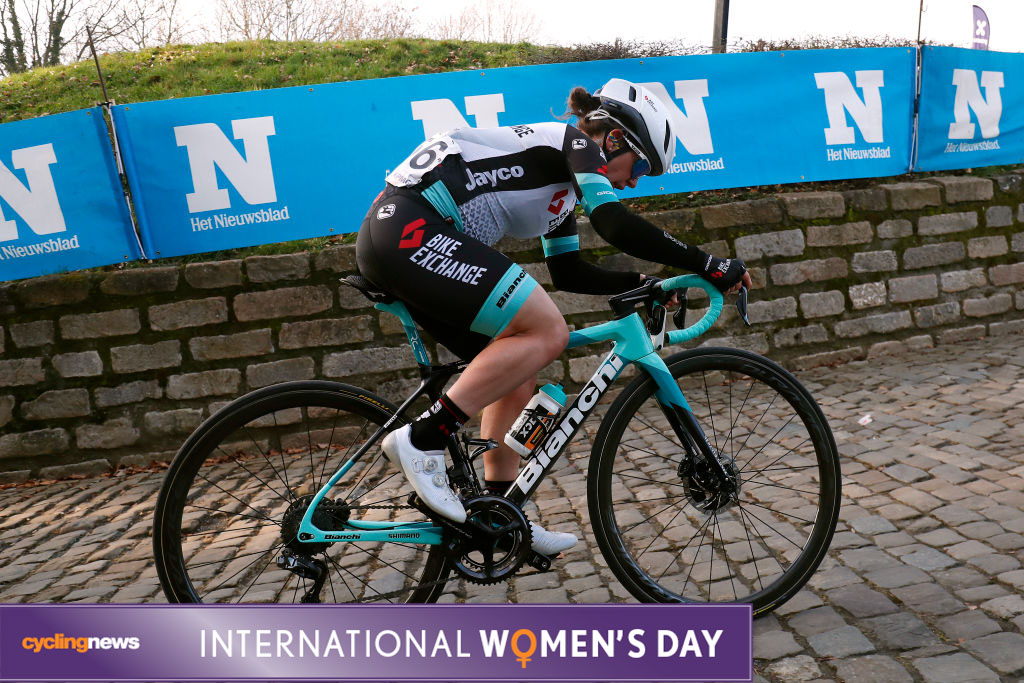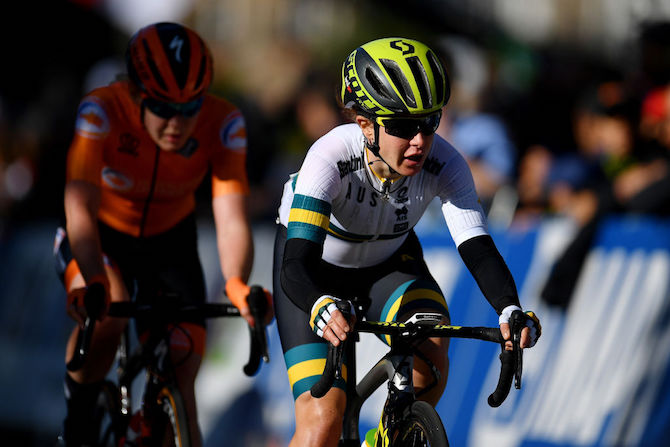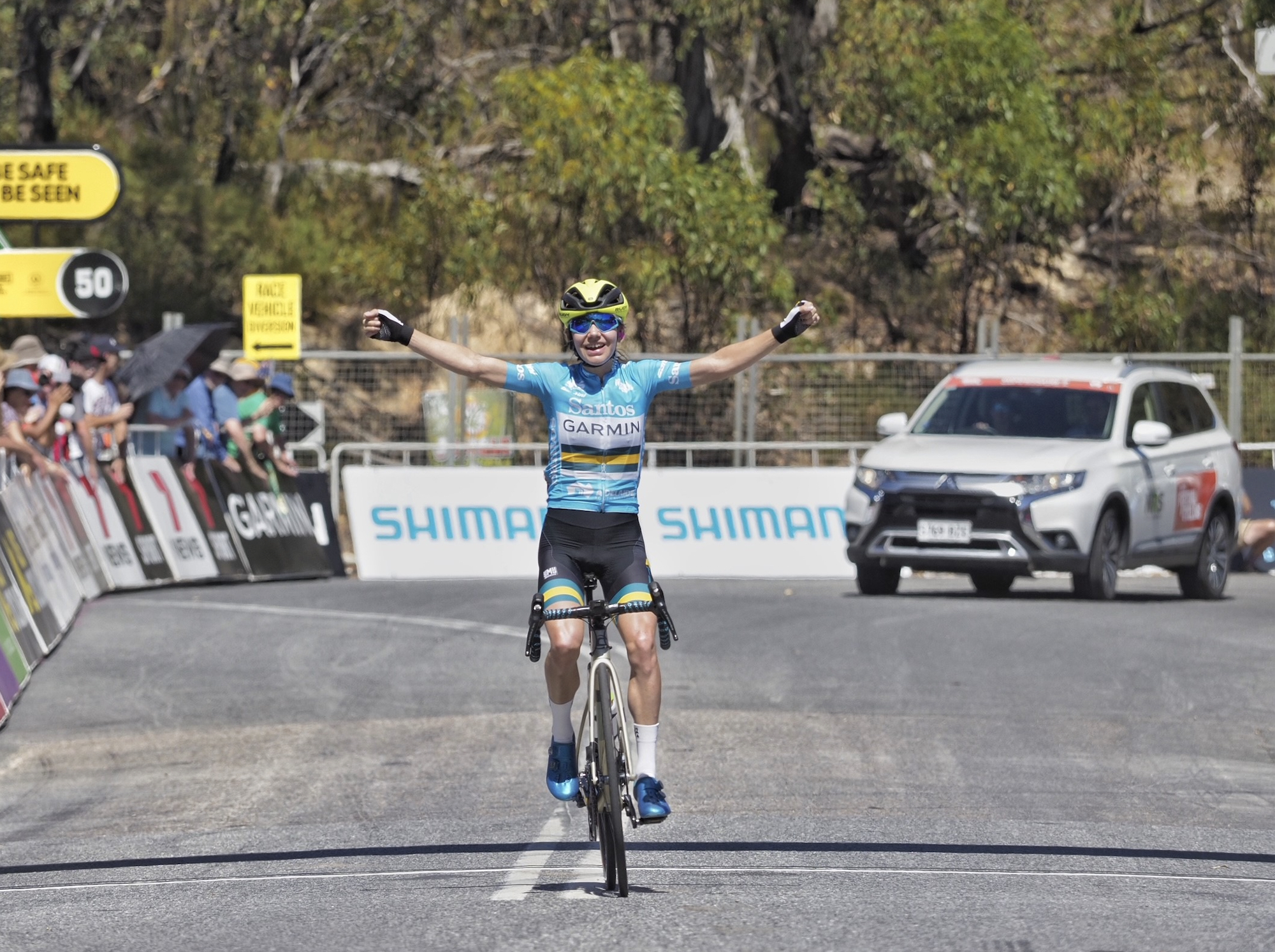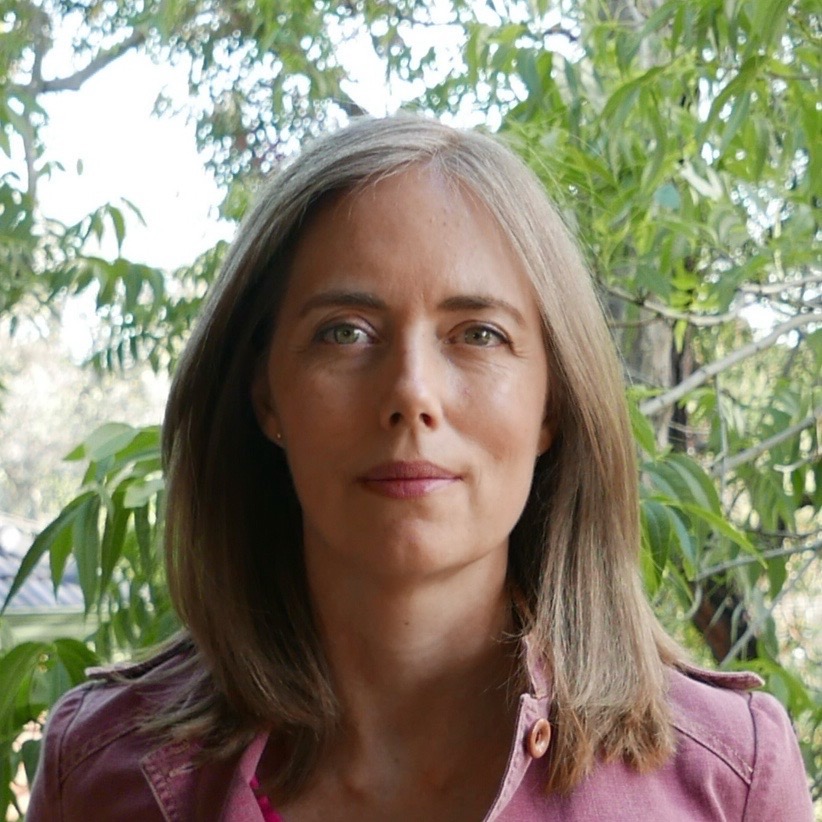Why it matters that a woman could be Australia's next Tour de France hero
The nation that can ‘Yell for Cadel’ could just as easily end up spurring on Spratt if a women’s Tour de France goes ahead

Cyclingnews' dedicated women's page features race reports, results, news, interviews, tech and galleries from the world of professional women's cycling.
Australian’s may not be the biggest followers of cycling, but they quickly embrace a sporting hero and even the most casual of cycling fans seemed swept up in the excitement of cheering on a home-nation hero when Cadel Evans was riding his way to victory at the Tour de France in 2011. ‘Yell for Cadel’ becoming the catch cry of the day, even across mainstream media which on most occasions buries the smallest snippets of cycling coverage somewhere among the swathe of Australian rules football news. The nation again rallied to ‘Roar for Richie’ as Richie Porte snagged third overall in 2020.
The profile of the Tour de France cuts through the glazed and puzzled looks that many Australian cycling fans may have experienced when trying to discuss the sport to which they are devoted in general company. Add the lure of an Australian excelling at an event that draws the eyes of the world, and the media coverage that comes with it, and new converts are won over, plus cycling all of a sudden becomes a choice topic of conversation.
That embrace of the event is one of the reasons why the prospect of a women’s Tour de France, hopefully with a stretch of challenging stages and live television coverage, can draw such excited anticipation from women’s cycling fans and riders alike even though, and perhaps even partly because, they are sitting on the other side of the world.
“It sounds like momentum is building towards actually having a women’s Tour de France and I think it can only be a good thing for women's cycling,” one of the nation’s top climbers, Lucy Kennedy (Team BikeExchange), told Cyclingnews.
“You do get some people saying we should have something different and separate to the Tour de France but in the general public, and even the sporting public, if you talk to anyone and say I'm a professional cyclist, particularly in Australia, when people don't know a lot about cycling they say, ‘Oh! Do you do the Tour de France?’ You have to say, ‘Well no because there is no women’s Tour de France.’
“I'm hopeful that they will pull something together, it becomes a really famous race and hopefully an Australian can win,” said the 32-year-old Australian rider.
Get The Leadout Newsletter
The latest race content, interviews, features, reviews and expert buying guides, direct to your inbox!
In the 107 editions of the Tour de France, only one Australian has ever savoured overall victory on the Champs-Élysées and donned the much sought-after yellow jersey after that final stage. Since the win by Evans in 2011, Porte is the top performer and the only other rider from the nation to make his way onto the podium. He along with plenty of other up-and-coming talents in men’s cycling look set to continue flying the flag in the French Grand Tour, but if there were to be a women’s event there is every possibility that the next Australian to step on the podium at the Tour de France could come from that edition.
A home nation hero
The current favourite is clearly Amanda Spratt, who has taken both bronze and silver at the world championships and twice stood on the podium at the only 10-day race currently on the women’s calendar, the Giro Rosa. Not only that, but her Australian-based team, Team BikeExchange, has continued to build a Grand Tour-worthy squad, including Kennedy, which has twice helped shepherd Spratt to two podiums and Dutch rider Annemiek van Vleuten to victory at the Giro Rosa.
“To be fighting for that yellow jersey, they were childhood dreams that I had but it wasn’t possible because there was no women’s Tour de France. If I could chase that childhood dream in reality, that would be fantastic,” Spratt told Cyclingnews.

As much as Spratt, Kennedy and so many other Australian riders would clearly relish that opportunity to chase that dream of fighting for stage wins and the yellow jersey at a women's Tour de France. What all the riders we spoke to seemed just as, if not more, excited about was that it could do so much for the profile of the sport.
“I think a lot of people will be tuning in for the first revamped women’s Tour de France. I’d like to think there would be a lot of supporters watching the race and building the whole profile of women’s cycling,” said Sarah Gigante (TIBCO-Silicon Valley Bank), who with her affinity for long, hard climbs, multi-day racing and time trials has all the characteristics to one day be a Grand Tour rider.
The potential for more equality in the racing and profile would be one big step – particularly if it stirred mainstream news reports and coverage that highlighted the feats of Van Vleuten or Ashleigh Moolman-Pasio on an exciting mountain stage in the same breath as a valiant win by Egan Bernal or Thibaut Pinot. Still, that could be made even bigger in Australia if there was also a home nation hero to barrack for.
“Definitely Spratty would be a great contender for something like that and to be able to get the name of someone like her out in the public and to get some of that support like ‘Yell for Cadel, ‘Roar for Richie’ and maybe we can make one for Spratty. It really could be special,” said the 20-year-old Gigante.
They are more than just cheesy catch phrases as they represent a swelling of sentiment that has a real impact, with reports of the 'Cadel effect' after the Tour de France win providing examples of increases in new members at cycling clubs and high-end bike sales. A RIDE media article reported that Australian Tour de France broadcasters SBS said at the time that they had recorded their highest ratings for the year with live coverage of the final stage and viewer numbers were up 33 per cent on the 2010 live stages.
Perhaps soon there will be the opportunity to try and formulate those catch phrases to spur on Spratt and, down the track, we may well yell with glee for 'Sarah G' but does it have the potential to have the same positive impact in women's cycling?
Daam Van Reeth, a professor at the Faculty of Economics and Business at KU Leuven, has been sharing on Twitter a promising sign that viewers are interested in getting behind women’s cycling when it is shown, particularly when the riders from their nation are the ones that usually end up on the podium.
In the Netherlands, which tops the women’s rankings, viewer numbers are often substantial and have, on a number of occasions, been similar to the men’s. The Dutch viewership for the UCI Cyclo-cross World Championships held in the nation was at 816,000 for the women’s race and 864,000 for the men’s race. Approximate numbers from Omloop Het Nieuwsblad showed that the Dutch television audience on NPO 1 for the women’s race was almost double the audience of the men’s race.
Time trials, 'proper' mountain stages and media coverage
The concept of a women's Tour de France isn't a new one. There was an official women’s Tour de France launched in 1984, run by the same organisers as the men’s event, with an 18-day race held simultaneously as the men's event and along much of the same but shortened routes with shared finish lines, but it ended in 1989.
There have been other versions over the years, right back to 1955 and then through the 1990s and the early 2000s up to 2009. Then, after a petition by riders to include a women's race alongside the Tour de France, Amaury Sport Organisation (ASO) launched the one-day La Course by Le Tour de France in 2014. The inaugural event was a circuit race on the Champs-Élysées on the final day of the Tour de France, and the hope was for growth. It briefly went to two days in 2017 but quickly dashed hopes by shifting back to a one-day event.
The calls for more have continued and last year UCI President David Lappartient confirmed that ASO would launch a stage race for women in 2022, but he could not confirm it would be officially named as the women’s Tour de France.
The type of association with the Tour de France, access to widespread media coverage and live broadcasts, plus of course the style of race itself, are all crucial to how much impact it will have.
“I would love to see a five-day stage race and a proper mountain stage – we can ride mountains – a time trial, we could finish on the Champs-Élysées and have that Tour de France theme,” said Spratt. “Whether it’s the last five days of the men’s Tour or we say, hey, it’s better for women’s cycling if we have it the week after the men’s Tour de France, then there is that time to have the coverage.
“One of the problems with the women’s Giro, is that it’s on at the same time as the Tour de France, and that’s the biggest race in the world, so it is an idea to have it maybe the week after the men’s Tour de France, and to give it the coverage that everyone has time for and that everyone can work with.”
Maintaining the challenging aspect is something that Gigante, who at the age of 20 has already won Australia's elite time trial title and the road race title, wants to see and definitely some iconic climbs.

“I hope the courses are really hard and like the men’s Grand Tours they are always super mountainous. I’d just love some mountains in there. But also hopefully it’s nice and long, and also has the whole tradition and prestige of the event. I think just lining up at the start line would be something that gives you goosebumps,” said Gigante.
For this year, though, what we have is a one-day La Course, the longest race yet at 130 kilometres with six trips up the Mûr-de-Bretagne. It runs on the same day as the men’s Tour de France stage 2. After that, we shall have to wait and see what evolves for 2022.
Perhaps we can start preparing some decent catchphrases in the meantime.

Simone is a degree-qualified journalist that has accumulated decades of wide-ranging experience while working across a variety of leading media organisations. She joined Cyclingnews as a Production Editor at the start of the 2021 season and has now moved into the role of Australia Editor. Previously she worked as a freelance writer, Australian Editor at Ella CyclingTips and as a correspondent for Reuters and Bloomberg. Cycling was initially purely a leisure pursuit for Simone, who started out as a business journalist, but in 2015 her career focus also shifted to the sport.